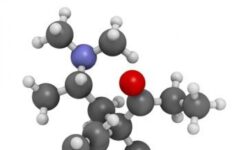Original title: Percutaneous Closure of Postinfarction Ventricular Septal Defect: In-Hospital Outcomes and Long-Term Follow-Up of UK Experience. Reference: Circulation. 2014 Jun 10;129(23):2395-402. As a mechanical post AMI complication, interventricular communication carries a grim prognosis. Surgery has achieved reasonable outcomes but only for those patients who survive the acute phase of healing. Percutaneous closure is a viable early alternative. …
Best ejection fraction using Metoprolol as pretreatment in acute myocardial infarction
Original title: Long-Term Benefict of Early Pre-Reperfusion Metoprolol Administraction in Patients With Acute Myocardial Infaction. From the METOCARD-CNIC Trial. Reference: Gonzalo Pizarro et, al. J Am Coll Cardiol 20141;63:2356-62 The anterior infarction with ST- segment elevation has a high morbidity and mortality, both in the acute phase as well as after the presence of heart failure, arrhythmias…
3 to 6 months of dual antiplatelet after DES reduced bleeding and did not raise mortality or infarction.
Original title: Meta-analysis of randomized clinical trials comparing short term -vs- long term dual antiplatelet therapy following drug eluting stents. Reference: El-Hayek G et al. Am J Cardiol. 2014; Epub ahead of print. This meta-analysis examined the data of four randomized and controlled studies (EXCELLENT, PRODIGY, RESET y OPTIMIZE) including 8157 patients receiving sirolimus, paclitaxel, everolimus or zotarolimus…
Cohort with left main coronary injury of SYNTAX. Final monitoring at 5 years.
Original title: Five-year outcomes in patients with left main disease treated with either percutaneous coronary intervention or coronary artery bypass grafting in the synergy between percutaneous coronary intervention with taxus and cardiac surgery trial. Reference: Morice MC et al. Circulation. 2014 Jun 10;129(23):2388-94. Current guidelines recommend CABG as the strategy of choice for treating lesions of…
Contrast-induced nephropathy in the context of PCI, a lot more frequent in women
Original title: Female gender and contrast-induced nephropathy in primary percutaneous intervention for ST-segment elevatio myocardial infarction. Reference: Stefano Lucreziotti, et al. International Journal of Cardiology 2014;174:37-42 Primary PCI has been demonstrated beneficial. However, it is associated to greater contrast-induced nephropathy (CIN) with increased in hospital and long term morbidity and mortality. In addition, several reports have shown…
Coronary angioplasty via radial access using 4 Fr introducer. Minimally invasive to the extreme.
Original title: Comparison of frequency of Radial Artery Oclusion Alter 4Fr Versus 6Fr Transradial Coronary intervention (from the Novel Angioplasty Using Coronary Accessor Trial). Reference: Satoshi Takesita, et al. Am J Cardiol 2014;113:1986-89) Since Andreas Gruentzig performed the first angioplasty, technological development has improved devices and radial access becomes more common. This procedure reduces complications, mainly bleeding. However,…
1-Year Clinical Outcomes of Everolimus-Eluting Bioresorbable Vascular Scaffolds in Diabetic Patients
Original title: 1-Year Clinical Outcomes of Diabetic Patients Treated With Everolimus-Eluting Bioresorbable Vascular Scaffolds A Pooled Analysis of the ABSORB and the SPIRIT Trials. Reference: Muramatsu T et al. JACC CardiovascInterv. 2014 May;7(5):482-93. This study included ABSORB, ABSORB Extend and SPIRIT patients. A total of 136 diabetic patients and 415 non diabetic receiving everolimus-eluting bioresorbable scaffolds (Absorb) and…
Elevated C-reactive protein levels could predict future events associated to non-culprit lesions. PROSPECT study sub analysis.
Original title: Relation of C-reactive protein levels to instability of untreated vulnerable coronary plaques (from the PROSPECT study). Reference: Kelly CR et al. Am J Cardiol. 2014;Epub ahead of print. The original PROSPECT study included 697 patients with acute coronary syndrome (ACS) undergoing culprit artery percutaneous coronary intervention (PCI) followed by intravascular ultrasound (IVUS) to the rest of…
The radial access is a viable alternative in infarction complicated with cardiogenic shock
Original title: Arterial access site utilization in cardiogenic shock in the United Kingdom: Is radial access feasible? Reference: Mamas A. Mamas, et al. Am Heart J 2014;167:900-08 Cardiogenic shock in the context of acute myocardial infarction is associated with high mortality, and represents approximately 10% of major bleeding complications. Radial Access reduces mortality mainly by reducing bleeding; however,…
Orbital Atherectomy improves calcified lesions treatment outcomes
Original title: Pivotal Trial to Evaluate the Safety and Efficacy of the Orbital Atherectomy System in Treating de Novo, Severely Calcified Coronary Lesions (ORBIT II) Reference: Jeffrey Chambers, et al. JACC Intervention 2014;7:510-8 Severely calcified coronary lesions, traditionally associated to difficult or impossible stent implantation, asymmetric stent expansion, higher post procedural events rate, more restenosis, more lesion revascularization,…
Dedicated two everolimus eluting stent strategies improve bifurcation PCI outcomes
Original title: Dedicated two-stents technique in complex bifurcation percutaneous coronary intervention with use of everolimus-eluting stents: The EES-bifurction study. Reference: Nisharamed I. Kherada, et al. International Journal of Cardiology 2014;174:13-17 Bifurcation PCI, especially 1.1.1 Medina bifurcation lesions PCI, is particularly challenging and has been associated with increased restenosis. The use of drug eluting stents (DES) associated to…










